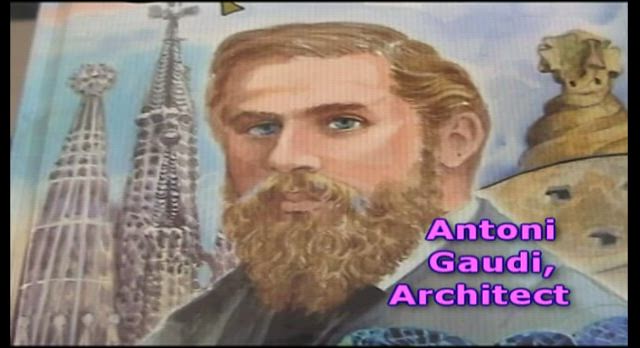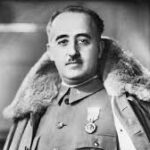Antoni Gaudí Net Worth, Biology, and Life Story
Antoni Gaudí Net Worth in 2025: How Valuable Is the Legacy of Barcelona’s Master Architect?
You might be surprised to learn that Antoni Gaudí’s net worth in 2025 is estimated to be around $300 million. Now, keep in mind, Gaudí passed away almost a century ago, in 1926, so this figure doesn’t reflect personal earnings like a living celebrity’s net worth. Instead, it represents the value tied to his architectural masterpieces, intellectual property rights, tourism revenue generated by his buildings, and the cultural heritage his work has created. Compared to last year’s estimate of $280 million and $260 million in 2023, his net worth has steadily grown as more visitors flock to Barcelona to see his iconic works.
Let me break it down for you: if Gaudí’s estate were generating income today, it would be bringing in about $34,000 every hour, roughly $820,000 daily, $25 million monthly, and $300 million annually. This “income” mainly comes from entrance fees to his famous buildings like the Sagrada Família, Casa Batlló, and Park Güell, as well as licensing deals and merchandise sales inspired by his unique style. The Sagrada Família alone draws millions of visitors annually, making it one of the most-visited monuments in Spain.
Here’s the thing—Gaudí’s net worth is unlike that of a typical artist because it’s embedded in physical structures that continue to attract millions and generate revenue. His architectural legacy is a living, breathing part of Barcelona’s economy and cultural identity. If you want to explore more about Gaudí’s incredible impact, the official Casa Batlló website offers fascinating insights into his masterpieces and ongoing influence.
About Antoni Gaudí: The Visionary Architect Who Redefined Barcelona
Why is Antoni Gaudí so popular?
Honestly, it’s because he changed the way we think about architecture by blending nature, religion, and innovative craftsmanship into his designs. Born on June 25, 1852, in Reus or Riudoms, Catalonia, Spain, Gaudí became the greatest exponent of Catalan Modernisme, a movement that combined Gothic revival with organic forms. He died on June 10, 1926, in Barcelona at the age of 73 after a tragic accident involving a tram.
Gaudí’s profession was architecture, but he was also a designer and craftsman. His works are famous for their flowing organic shapes, vibrant colors, and experimental use of materials like ceramics, stained glass, wrought iron, and carpentry. His masterpiece, the still-unfinished Sagrada Família church, is a UNESCO World Heritage Site and the most visited monument in Spain. Because of his deep Catholic faith and the religious symbolism in his work, he earned the nickname “God’s Architect.” In fact, Pope Francis declared Gaudí Venerable in April 2025, a key step toward sainthood.
Gaudí’s early life was humble. His father was a coppersmith, which inspired Gaudí’s love for craftsmanship and detail. He had dark brown hair and eyes, and was known for his modest lifestyle. Unlike many famous personalities, Gaudí never married or had children. He dedicated his life to his work and faith, living simply and focusing entirely on his architectural projects.
Gaudí faced many challenges, including criticism from contemporaries who found his style eccentric or overly religious. He was also financially constrained at times and struggled with the slow pace of his ambitious projects. Despite this, his perseverance and unique vision earned him lasting recognition. He was a private man with few close friends but left a legacy that has shaped Barcelona’s identity.
He was a vegetarian for health reasons, influenced by natural medicine, and lived a disciplined life. Gaudí didn’t smoke or drink heavily and preferred simple, functional clothing that reflected his humble nature. His story shows that success often comes from staying true to your vision, no matter how unconventional it may seem.
If you want to dive deeper into Gaudí’s life and faith, check out the Wikipedia page on Antoni Gaudí and the Vatican News article on his declaration as Venerable.
Education & Career: From Architecture Student to Master of Modernisme
Gaudí’s education began at the Escola Tècnica Superior d’Arquitectura in Barcelona, where he enrolled in 1873 and graduated in 1878. His studies were interrupted by military service and other activities, but he showed early signs of brilliance and originality. After graduating, Gaudí started working on smaller projects, gradually gaining recognition for his innovative designs.
His career took off in the 1880s when he began collaborating with Eusebi Güell, a wealthy industrialist and patron who supported many of Gaudí’s major projects. This partnership led to masterpieces like Park Güell and Palau Güell. Gaudí’s style evolved from neo-Gothic influences to a unique Modernisme style inspired by nature and religion.
Gaudí faced many career challenges, including financial difficulties and the enormous task of constructing the Sagrada Família, which consumed much of his later life. After 1910, he focused almost exclusively on this project, living in the workshop to dedicate himself fully to its completion. Despite obstacles, Gaudí’s career is a testament to innovation and persistence.
Achievements and Contributions: Why Antoni Gaudí Changed Architecture Forever
Gaudí’s impact on architecture is huge. Here are some of his top achievements:
- Designed the Sagrada Família, an architectural and engineering marvel still under construction.
- Created iconic buildings like Casa Batlló and Casa Milà (La Pedrera), known for their organic forms and innovative designs.
- Pioneered the use of trencadís, a mosaic technique using broken ceramic tiles.
- Integrated crafts such as ceramics, stained glass, wrought ironwork, and carpentry into his architecture.
- Influenced the Catalan Modernisme movement, blending art, politics, and culture.
- Seven of his works are UNESCO World Heritage Sites.
- Developed innovative structural solutions like hyperbolic paraboloids and helicoidal columns.
- Inspired generations of architects worldwide, including Frank Gehry and Zaha Hadid.
- Introduced a new architectural language inspired by nature’s forms.
- His buildings continue to attract millions of visitors, contributing significantly to Barcelona’s economy.
- Received awards such as the Barcelona City Council’s Best Building of the Year for Casa Calvet.
- His philosophy emphasized harmony between function, nature, and spirituality.
- His innovative use of parabolic arches and self-supporting facades influenced modern architecture.
- His legacy extends beyond buildings, impacting design, art, and cultural identity.
If you want to explore his engineering genius, the Dlubal blog on Gaudí’s architecture gives a great overview of his structural innovations.
Height, Color, and Weight: What Did Antoni Gaudí Look Like?
If you’re curious about Gaudí’s physical appearance, he stood about 5 feet 7 inches (1.70 meters) tall. He had dark brown hair and eyes, typical of Catalan features. Gaudí was of average build, neither fat nor particularly slim, but known more for his intense focus and humble demeanor than his looks.
Social Media Accounts: How Gaudí’s Legacy Thrives Online
Since Antoni Gaudí lived in the 19th and early 20th centuries, he obviously didn’t have personal social media accounts. However, his legacy is very much alive online through official museum pages and cultural institutions. The Casa Batlló Instagram has over 600,000 followers, regularly posting about Gaudí’s works, exhibitions, and events. The official Sagrada Família Instagram also has a massive following, sharing updates on the ongoing construction and historical facts about Gaudí’s masterpiece.
FAQs about Antoni Gaudí
Q1: Did Antoni Gaudí ever marry or have children?
No, Gaudí never married and had no children. He devoted his life to architecture and faith.
Q2: What is Antoni Gaudí’s most famous work?
The Sagrada Família is his most famous and ambitious project, still under construction nearly 100 years after his death.
Q3: Why was Gaudí called “God’s Architect”?
Because of his deep Catholic faith and the religious symbolism in his works, especially the Sagrada Família.
Q4: Did Gaudí face criticism during his career?
Yes, some contemporaries found his style eccentric or overly religious, but his genius was eventually recognized worldwide.
If you want to learn more about Gaudí’s life and works, the Encyclopedia Britannica page provides a comprehensive overview.







